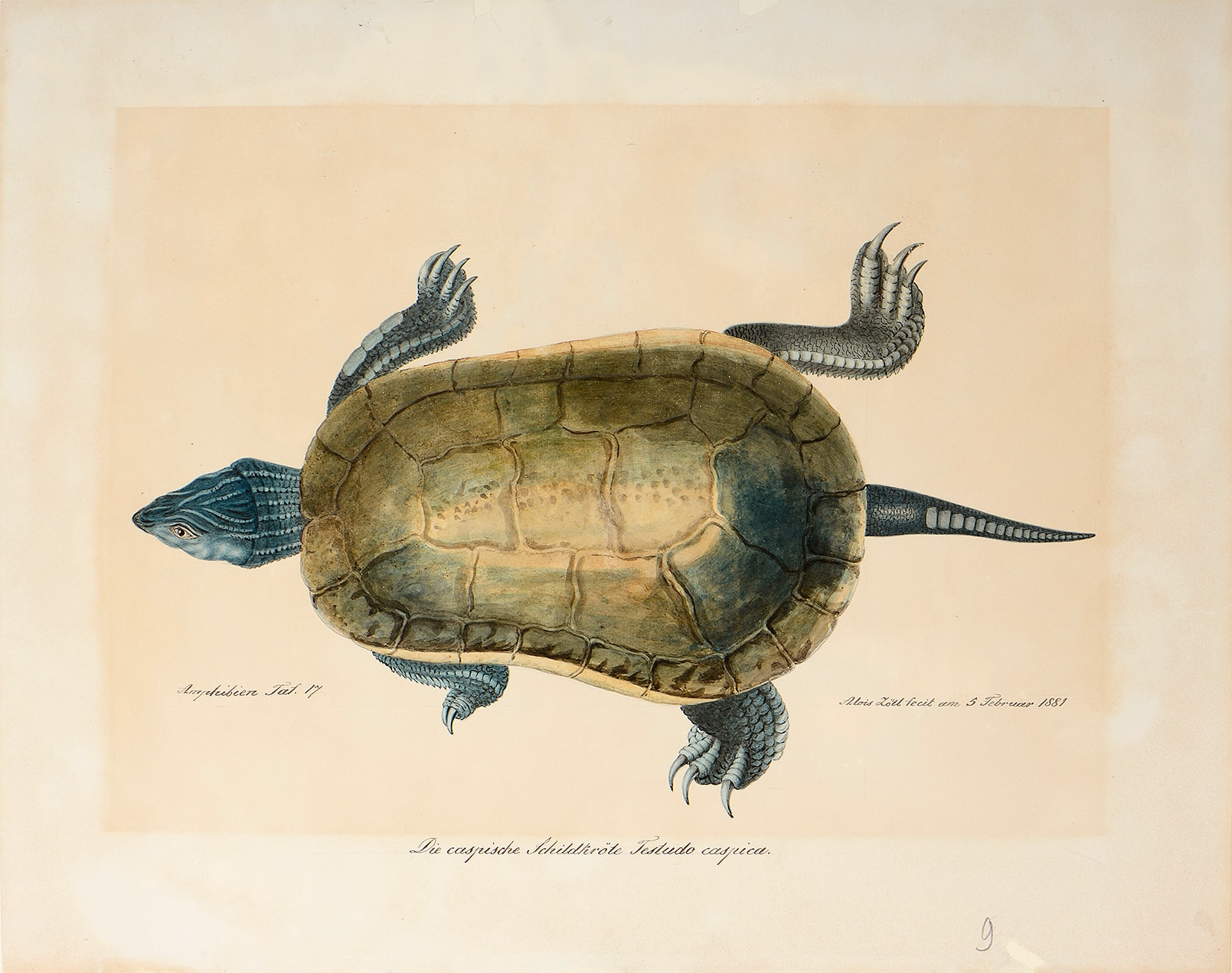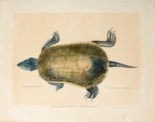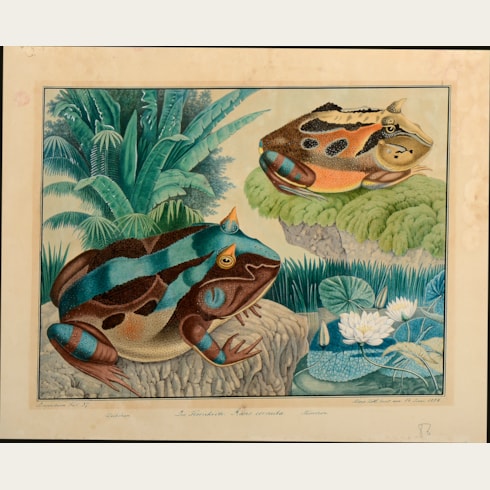Aloys ZÖTL
(Freistadt 1803 - Eferding 1887)
A Caspian Turtle (Testudo caspica)
Sold
Watercolour. Laid down.
Signed and dated Alois Zötl fecit am 5 Februar 1881 at the lower right. Inscribed Amphibien Taf.17 at the lower left, and titled Die caspische Schildkröte Testudo caspica. in the bottom margin.
Numbered 9 in the lower right margin.
325 x 445 mm. (11 3/4 x 17 1/2 in.) [image]
439 x 546 mm. (17 1/4 x 21 1/2 in.) [sheet]
Signed and dated Alois Zötl fecit am 5 Februar 1881 at the lower right. Inscribed Amphibien Taf.17 at the lower left, and titled Die caspische Schildkröte Testudo caspica. in the bottom margin.
Numbered 9 in the lower right margin.
325 x 445 mm. (11 3/4 x 17 1/2 in.) [image]
439 x 546 mm. (17 1/4 x 21 1/2 in.) [sheet]
Five further depictions of various species of turtles, bearing dates between 1880 and 1882, were included in an auction of 150 large watercolours from Aloys Zötl’s studio, held in Paris in 1955, while two others appeared in a second sale of 170 watercolours the following year. Other studies of turtles, dated 1861, 1867 and 1880 as part of the Amphibien series, are illustrated in a recent monograph on the artist’s watercolours.
A similar watercolour of a Tortue Bleue, dated 31 August 1881, was acquired by André Breton at the first sale of Zotl’s watercolours, and recently appeared at auction in Paris.
A similar watercolour of a Tortue Bleue, dated 31 August 1881, was acquired by André Breton at the first sale of Zotl’s watercolours, and recently appeared at auction in Paris.
From 1831 until his death in 1887, the obscure Austrian dyer and amateur artist Aloys Zötl produced an extensive series of very large and beautifully drawn watercolours of exotic animals, known as the Bestiarium. This massive project was to be his life’s work, although its purpose remains unknown. The watercolours of the Bestiarium, characterized by a brilliant technique and rich colouring, allied to the unbridled imagination of the artist, do not seem to have ever been reproduced in Zötl’s lifetime, either as prints or in the form of a book. While the animals are generally depicted with a high degree of accuracy, they are given a sort of added symbolism in the way in which the artist has depicted them on the page. Most of the watercolours show the animals in some form of natural habitat, although this at times seems to verge on the imaginary. It is not known if these spectacular watercolours were the result of a commission or - as is perhaps most likely, given the fact that they were part of a project that seems to have lasted over fifty years - simply an astonishing, and lifelong, labour of love. Certainly all of the watercolours remained together after the artist’s death.
Hardly anything is known of the life of Zötl. The son of a master dyer, he was born in Freistadt in Upper Austria and took up his father’s profession, as did one of his brothers, while another became a bookseller. Following his marriage Zötl moved to the village of Eferding, about forty kilometres from Freistadt, where he remained for the rest of his life. He died on October 21st, 1887, after a long illness. His last watercolour, a study of exotic seashells, was dated only eighteen days earlier, on October 3rd, 1887.
As an artist, Zötl remained almost completely unknown until after the Second World War, when a large group of his animal and natural history watercolours – numbering 320 sheets – was sold in two auctions in Paris in 1955 and 1956. Nothing is known of the earlier provenance of these works, which were consigned for sale by a descendant of an Austrian family. Writing shortly after the first sale of 150 watercolours from the Bestiarium in December 1955, at which he purchased eleven works, the writer André Breton likened Zötl’s work to that of Henri Rousseau, and identified a distinct Surrealist sensibility in much of his oeuvre.
As Breton noted, ‘Lacking any biographical details about the artist, one can only indulge one’s fantasies in imagining the reasons which might have induced this workman from Upper Austria, a dyer by profession, to undertake so zealously between 1832 and 1887 the elaboration of the most sumptuous bestiary ever seen. It would almost seem as though Zötl’s vision, trained professionally to detect the most subtle colours and tones, had endowed him with a mental prism functioning as an instrument of second-sight and revealing to him in succession, back to its most distant origins, the animal kingdom which remains such an enigmatic aspect in each of our lives and which plays such an essential role in the symbolism of the unconscious mind.’
Zötl does not seem to have travelled much beyond his home in the village of Eferding in Upper Austria, and it is thought that most of his watercolours must have been derived from his close study of the extensive library of published works of zoology, natural history, ethnography and travel which he owned, which remains in the possesion of his descendants.





